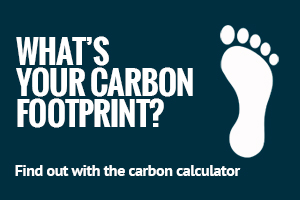What is a carbon offset?
A carbon offset is a credit for greenhouse gas reductions achieved by one party that can be purchased and used to compensate (offset) the emissions of another party.
Why?
Faced with challenging timber markets and a public demand for climate solutions, forest managers across North America are generating new revenue streams from forest carbon sequestration projects on their lands. The Community Forest Carbon Offset Program provides an opportunity for FSC® certified community forests to financially benefit from the sale of carbon stored in their forests.
Aside from helping to combat climate change, the development of carbon offsets will also contribute to a host of other ecosystem benefits such as clean drinking water, health wildlife habitats and recreational opportunities. These benefits will be realized while maintaining a vibrant forest economy.
Types of Carbon Markets
Voluntary
The voluntary carbon market is administered by non-profit registries such as the American Carbon Registry (ACR) and Verified Carbon Standard (VCS). Voluntary market projects offer shorter time commitments and more flexible requirements such as:
- No pre-set limits on even-age management, fertilization or age distribution;
- FSC certification often satisfies all forest management requirements;
- Ability to earn-back and sell buffer credits if no reversals occur;
- Buffer and buyout insurance options;
- Baselines determined by common practices, not common stocks; and
- Provisions for partial withdrawal of acreage from project.
Compliance
Compliance carbon markets generating demand for forest carbon offsets are in California and Quebec. This market has been the focus of most forest carbon projects to date because it offers the highest carbon pricing and dependable demand, driven by the compliance needs of large carbon emitters in California and Quebec. Compliance projects have significant eligibility requirements and management restrictions (e.g. clear-cut limits, no broadcast fertilization, diverse native species). Forest owners are required to commit to monitoring, reporting and verifying carbon stocks for 100 years following credit sales, and compensating for any loss of carbon due to management actions. Ontario currently does not have a compliance carbon market.
What are Improved Forest Management Projects?
Improved Forest Management (IFM) projects reward forest owners for committing to sequester more CO2 than they otherwise could by maintaining sustainable forest management practices over the long term. It allows for sustainable harvesting of wood products. Forests that can demonstrate that carbon stocking in their forests is greater than the regional average are likely to be eligible to participate in the Program. The revenues from the forest carbon would compensate forest owners for making such long-term commitments. This project type offers the greatest benefit to Community Forests.
Partnership with Bluesource Canada
 The Model Forest has partnered with Bluesource Canada, a leading developer of forest carbon and other Greenhouse Gas (GHG) offsets to generate carbon offsets for community.
The Model Forest has partnered with Bluesource Canada, a leading developer of forest carbon and other Greenhouse Gas (GHG) offsets to generate carbon offsets for community.
Bluesource Canada, the oldest and largest carbon project developer in North America, has the forestry and market expertise to help evaluate options for the forest owner across carbon markets and project types.
What does the partnership offer?
- Free initial assessment of project opportunity;
- Ongoing support in the evaluation of the opportunity;
- If you choose to proceed with an IFM project, Bluesource will undertake and finance all the work to generate the offsets and monetize them for you in the market;
- The Model Forest will work with Bluesource to reduce the burden of undertaking such projects by:
- Coordinating the data capture and, where possible, use data already at its disposal;
- Coordinate the inventory development and 3rd party verification for many opportunities within the EOMF network to reduce the cost to any individual project;
- To the extent possible, coordinate the on-site work for the IFM project with FSC® audits to reduce the burden on land owners; and
- Providing its members with a commercial framework for the development and monetization of the offsets.
Understanding Your Options
To understand whether the opportunity is right for your Community Forest, we can perform an initial assessment of project eligibility and potential economic value. This assessment will provide you with an understanding of the trade-off between potential revenues and long-term commitments that can facilitate a decision on whether to pursue the opportunity.
To learn more about the opportunity please feel free to contact us.
Frequently Asked Questions
How do carbon offset credits work?
It's a concentrated effort to produce less waste and use more renewable energy. After reduction has reached its limit, or its comfortable threshold, carbon offsets can make up for the rest. Carbon offsets are a form of trade. When you buy an offset, you fund projects that reduce greenhouse gas (GHG) emissions.
How many trees are needed to offset carbon?
A tree can absorb as much as 48 pounds of carbon dioxide per year and can sequester 1 ton of carbon dioxide by the time it reaches 40 years old. That's about 22 kg / yr or 455 kg / lifetime for the Imperial-challenged.

